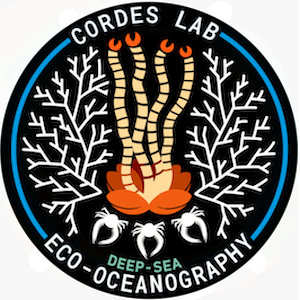2018 DEEP SEARCH
August 19, 2018 – September 2, 2018
R/V Atlantis, HOV Alvin
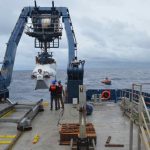
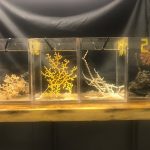
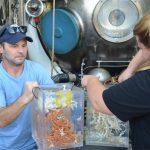
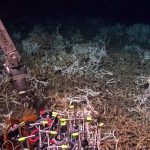
From August 19 to September 2, 2018, Erik Cordes leads a multi-organizational research expedition partnered with NOAA, BOEM, and USGS on the Woods Hole Oceanographic Institution-operated R/V Atlantis to collect critical baseline information about deepwater habitats offshore the U.S. Mid- and South Atlantic.
Although it was relatively short, this was an incredibly successful research expedition. We learned a lot about the different habitats in the study area between Virginia and Georgia. The R/V Atlantis mapped large areas of the ocean floor and helped us sample the waters of the Gulf Stream and Atlantic Ocean. We completed 11 dives in the human occupied vehicle (HOV) Alvin in the turbid parts of canyons, stunning cliff faces, bubbling gas seeps, and massive deep-sea coral reefs. The information we have gathered will help us to understand these habitats and their dynamics—methane flux into the ocean and atmosphere, the life spans of corals, the flow of carbon and nutrients through canyons, and much more. It will also help us to interpret the maps that we and others have made of the region and determine where other features may lay, still undiscovered. The ultimate goal of DEEP SEARCH is to provide all of this information to the U.S. Bureau of Ocean Energy Management as they consider opening up the areas offshore of the eastern U.S. to energy development, and as they develop management plans to deal with the potential impacts.
The biggest outcome of the cruise, in my mind, is the discovery of 85 miles of deep-sea coral reef that was previously unknown. The first inkling that this reef might be there came from the mapping efforts of the Okeanos Explorer earlier in the year, which was part of our larger DEEP SEARCH research program. These maps revealed a series of mounds and ridges in an area that was previously thought to be a relatively featureless part of the edge of the continental shelf. The high resolution of the multibeam echosounder sonar on the Okeanos allowed us to see these mounds and ridges for the first time. On the follow-up Okeanoscruise with the remotely operated vehicle (ROV) Deep Discoverer, with DEEP SEARCH principal investigator Cheryl Morrison from the U.S. Geological Survey as the biology lead, one of the long ridges was first explored. Before the dive, this target was thought to be a long, rocky ridge based on our previous knowledge of the geology and biology of the region. However, when the ROV reached the seafloor, there was coral skeleton as far as the eye could see, throughout the entire dive. But this was only our first hint, a few short hours of observation, of what may be waiting for us in the area.
